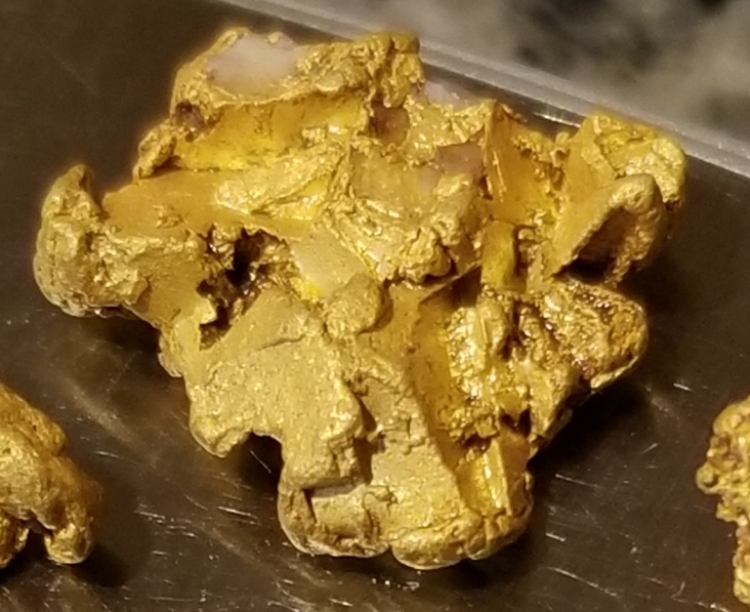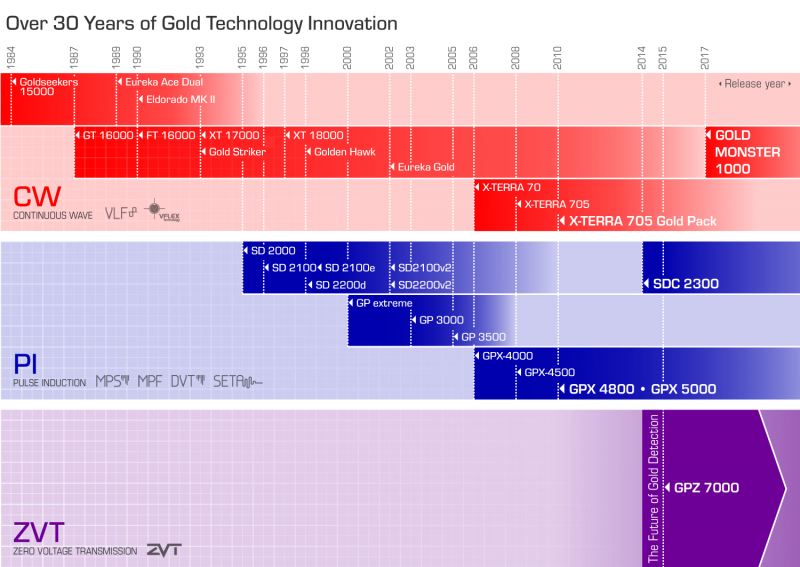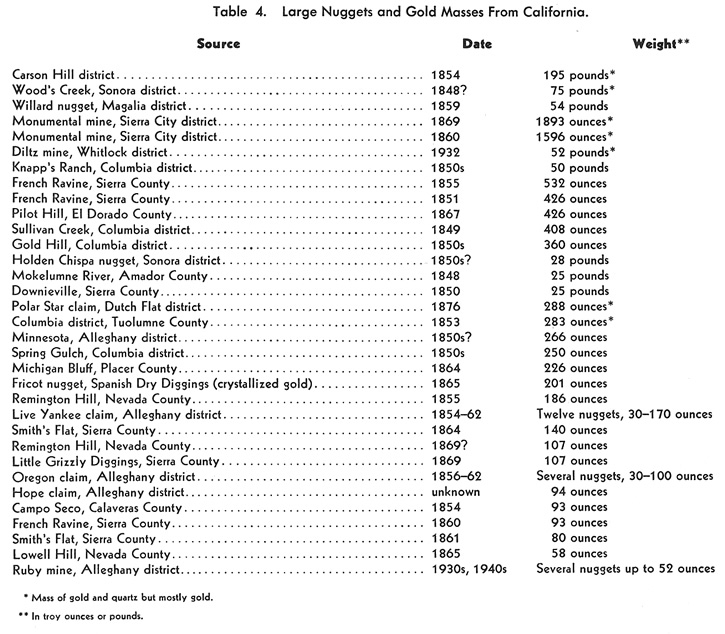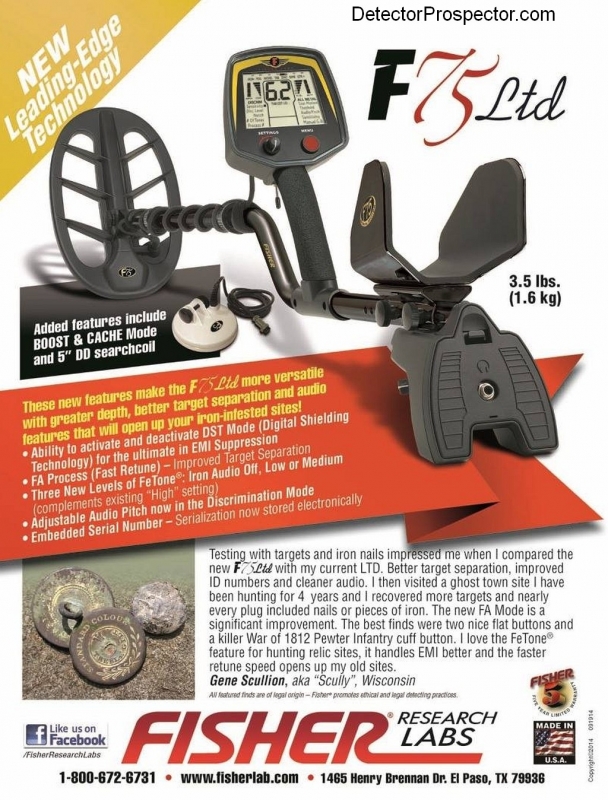-
Posts
19,799 -
Joined
Content Type
Forums
Detector Prospector Home
Detector Database
Downloads
Everything posted by Steve Herschbach
-
Welcome to the forum! I never had water issues with my CTX but it is one reason I sold my last one. At $2500 and with a battery seal and USB seal both to worry about, well, I just worried a little bit every time I put it in the water. I may not have had issues with the CTX, but I had two other models by other brands leak on me (both brand new!) and that is in my head, along with old CTX posts talking about leakage issues. The elimination of those two leak points is a big deal to me, combined with a lower cost machine that I will not freak out as much over if it does leak. I never travel without two detectors (very much because of those two mentioned machine failures) and so I am considering getting a Equinox 600 purely for in water use. The 800 would normally stay out of the water unless called upon to back the Equinox 600 up were it to fail for any reason. The 600 is as good as the 800 for saltwater use, and at $649 even less to worry about. And I can own both for far less than the cost of the CTX. Reports from experienced beach guys like yourself will be closely watched I am sure.
-
Same story as a week ago, I am afraid.
-

Why So Many Big Nuggets In Oz
Steve Herschbach replied to hawkeye's topic in Rocks, Minerals, Gems & Geology
I always liked geology from a young age, and once thought I might go to college for it, but instead just learned from reading it for decades. Fascinating stuff. Here is a presentation that has some good maps, etc.... https://www.smedg.org.au/Bendigo Ionex Aug07.pdf As far as "why" questions go it is always good to remember that even now most of what is presented are just theories. These guys for instance have a completely new theory as to the ultimate gold source for some Australian gold. My old geology teacher put it thus when asked a "why" question - "the conditions were favorable". Prospectors simplify even that into "gold is where you find it"! This one is not Australia but is one of my favorite recent summaries of gold deposit models: Models and Exploration Methods for Major Gold Deposit Types." Ore Deposits and Exploration Technology, Paper 48. By Robert, F., Brommecker, R., Bourne, B. T., Dobak, P. J., McEwan, C. .J., Rowe and R. R., Zhou, X. From the conclusion: "There has been significant progress in the last decade in the understanding of the geology, settings and controls of the diverse types of gold deposits, including the recognition of new deposit types in new environments. Such progress has been paralleled with the development of data integration, processing and visualization techniques, and of advances in geophysical, geochemical and spectral detection techniques. Geologists are now better equipped than ever to face the increasingly difficult challenge of finding gold. However, one of the key lessons of the last decade, as reminded by Sillitoe and Thompson (2006), is that the exploration work needs to remain grounded in geology, especially in the field, and the elaborate detection techniques and tools available will only find their full power when closely integrated with a good geological framework." Sounds like a prescription for successful nugget detecting to me! -

2 Good Days In Gold Basin
Steve Herschbach replied to Chris Ben's topic in Detector Prospector Forum
-

Minelabs Next Flagship Detector What Will It Be
Steve Herschbach replied to schiara's topic in Minelab Metal Detectors
Ha, I did not! I want that for the current GPZ, and as soon as possible!! -
Geology and Gold Mineralization of the Gold Basin-Lost Basin Mining Districts, Mohave County, Arizona By TED G. THEODORE, WILL N. BLAIR, and J. THOMAS NASH With a section on K-AR CHRONOLOGY OF MINERALIZATION AND IGNEOUS ACTIVITY By EDWIN H. McKEE and a section on IMPLICATIONS OF THE COMPOSITIONS OF LODE AND PLACER GOLD ByJ.C. ANTWEILER and W.L. CAMPBELL 1987 U.S. GEOLOGICAL SURVEY PROFESSIONAL PAPER 1361 The Lost Basin district contains a wide-ranging group of placer and lode mines in a belt lying between Hualapai Wash on the west and the Grand Wash Cliffs on the east (fig. 3). It extends from the Colorado River at the mouth of the Grand Canyon southward through the Grand Wash Cliffs for a total length of about 32 km. This district, although much larger in areal extent, has not been as active nor as productive as the adjacent Gold Basin district. The principal gold veins were discovered in 1886, and the production of the district was reported by Schrader (1909) to be "many thousand dollars," chiefly in gold. Placers apparently were first worked in 1931 and resulted in a minor local boom. However, recorded pro- duction in copper, gold, and silver during 1904-32 was valued at less than $45,000 (Hewett and others, 1936). The King Tut placers, discovered in 1931, were the most important placers in the Lost Basin district. Systematic sampling of the King Tut placers by G.E. Pitts in 1932. delineated approximately 90,000 tons of indicated reserves and 250,000 tons of probable reserves before mining operations on a relatively large scale began (Mining Journal, 1933, p. 10). All of this was confined to approximately one section of land. In the last four months of 1933 the King Tut yielded 117 oz of gold (Gerry and Miller, 1935). By 1936 the gold output from the King Tut was 450 oz, which represented the bulk of the entire pro- duction from the Lost Basin district. In 1939 Mr. Charles Duncan placered 13 oz of gold in 16 days, using only a sluice box and wash tub, near the King Tut placers (Engineering and Mining Journal, 1939), whereas the King Tut placers themselves were only worked intermittently until 1942. Eventually, placer mining of unconsolidated gravel from the upper reaches of present-day arroyos extended across approximately 25 km2 in the general area of the King Tut placers (Blacet, 1969). Nonetheless, by 1942 no additional production was recorded from the Lost Basin district. However, in the middle and late 1960's several small operators using dry washers were active intermittently in the general area of the King Tut placers. These washers were powered by small portable gasoline motors. Because of the surge in the price of gold during 1978-80, small-scale placer operations and extensive exploration efforts, centered on an area just to the north of the King Tut placers, began again. These efforts were continuing intermittently through 1986. Download The Full Report Here
-

Why So Many Big Nuggets In Oz
Steve Herschbach replied to hawkeye's topic in Rocks, Minerals, Gems & Geology
Unlike most U.S. geologic information Australia reports and publications are largely private fee access type reports. Pub,ic reports are rare. Here is a start. Victorian Gold Deposits 1998 “The Palaeozoic succession of Victoria represents a major world gold province with a total production of 2500 t of gold (i.e. 78 million oz). On a global scale, central Victoria represents one of the most gold mineralized areas outside the Witwatersrand of South Africa, and remains the prime example of a ‘slate belt’ gold province (also known as ‘turbidite-hosted’, or ‘shale-greywacke’ gold province).” Victorian Geology Geology of Victorian Gold Occurances 1908 -
A REVIEW OF GOLD MINERALIZATION IN EASTERN AUSTRALIA A. R. WILDE May 1988 The purpose of this report is to review the different styles of mineralization encountered in Eastern Australia, their distribution and genesis, particularly in the light of discoveries which have resulted from intensive exploration in recent years, and has been compiled almost entirely on the basis of literature research. Only occurrences in the states of Victoria, Queensland and New South Wales were considered. The report is arranged by state, not because this is geologically justified but because the various state geological surveys, mines departments and mining journals are prime sources of data. https://d28rz98at9flks.cloudfront.net/14266/Rec1989_030.pdf
-

Minelabs Next Flagship Detector What Will It Be
Steve Herschbach replied to schiara's topic in Minelab Metal Detectors
I have no idea what the next generation of ZVT will look like. My wish list is short... Ferrous discrimination A setting that can ground balance certain hot rocks that currently signal (like Fine Gold on a GPX) A true Salt Mode Lighter weight As far as when... this is the history so far. Click for larger version. -

Newest Big Nugget Found..........
Steve Herschbach replied to johnedoe's topic in Detector Prospector Forum
Nobody disputes Oz has produced more large nuggets than California Reg. Yes, there have been people misrepresent nugget sales. I can’t swear this is not of course as I did not see the nugget found myself. Not everything in the world is a scam however. Famous Gold Nuggets of the World by Hurley, Thomas Jefferson, 1900 -

Gold Hunting Shop In Ca?
Steve Herschbach replied to Highlandhowler's topic in Detector Prospector Forum
Please link to things instead of using secret codes. I added links to the last post. Thanks! -

Newest Big Nugget Found..........
Steve Herschbach replied to johnedoe's topic in Detector Prospector Forum
That is a May 2017 article about a find made in 2014, the Butte Nugget. It was covered on the forum. I have met the gentleman that found it. It was a legit find, and nuggets of this size were not that rare in California as to be discounted out of hand. Great nugget, but not a recent find. From Gold Districts of California, Bulletin 193 California Division of Mines and Geology 1976 -

Fisher F75+ Announced
Steve Herschbach replied to Steve Herschbach's topic in First Texas - Bounty Hunter, Fisher & Teknetics
Unless anyone can find out anything different it does appear First Texas has reissued the F75 LTD2 (with DST) as the F75+ at a lower price point. The F75 was introduced in 2007 and there have been quite a few variants in the last 10 years with the last major revision in 2014. From the Fisher Facebook page: "This is a value based promotion. You are correct it is not new technology just a great proven F75 model with lots of extras at an amazing price. We are working on new products and technology should have some of the new stuff out in 2018." Here is the "sell sheet" for the F75+ (2017/2018).... and here is the "sell sheet" for the F75 Ltd2 (2014).... -

New Detectors And Early Adopters
Steve Herschbach replied to Steve Herschbach's topic in Metal Detector Advice & Comparisons
The graph is not mine - Bryce Ryan & Neal Gross (1943) is the original source though the information and graph itself is widely used and quoted/modified in later usage. The original work is actually research into how new corn varieties are adopted by farmers. -

New Minelab Profind Pinpointers.......
Steve Herschbach replied to Redneck's topic in Minelab Equinox Forum
No, never laid hands on the new Pro-Finds. Buzzard has one. -
You do get some ferrous "wrapping high" but so far it appears that Minelab has managed to keep a high degree of separation between ferrous "high falsing" and silver coin signals. I don't want to talk specific target id numbers yet in case they shift but the only times I get tricked is when I in effect trick myself by digging questionable targets as part of the education process. I have so much I want to say about ferrous handling but it needs a couple big articles. The short story is that the secret to the Equinox is full tones plus extremely high speed. Simple targets like a coin give solid hits. Complex targets create complex "audio profiles" as the detector reacts at lightning speed to changes in target composition and shape. This is a detector for those that hunt by ear.
-
Anyone that has followed my detector reports over the years will see that I don't talk about stuff found at X inches except in the rarest circumstances. The main reason is the dime that can be found at 10" in Florida can only be found at 6" more or less in my soil. So I get all excited by some coin I found at 7 inches and people all over the internet think I am an idiot or my detector sucks. The ground here has a very heavy magnetite content and dime readings shift to ferrous readings near 6". However, it does depend on how much peat/organic soil has been mixed in the topsoil and I do get better depths there. Unfortunately, the areas with the deeper turf also seem to be areas where that soil was brought in during the 60's or later. That means oddly enough that some of the deeper finds are not the oldest. It gets even weirder in that what you have with Equinox is solid target id numbers combined with extremely high speed. That means that some of the most eye opening finds are not deep at all, but stuff not all that deep in the midst of dense trash that prior BBS/FBS units could not touch due to target masking.
-

Minelab Discount For U.S. Military
Steve Herschbach replied to Steve Herschbach's topic in Minelab Equinox Forum
From U.S. dealers. I could be wrong but I don't know that Minelab sells direct to the public. Do you have a link? -
Here is an excellent presentation by engineer Mark Rowan (was with White's when this video was shot) explaining how frequencies affect targets, ground, and salt signals, and how multiple frequencies can be used to alleviate the ill effects of ground and salt signals together. His part of the video starts at the 4:00 minute mark.
-
Minelab Equinox Beach Mode - Excels in dry sand, wet sand, and underwater. Beach mode operates in Multi only, and is designed for typical use in beach conditions. It seems that way to you because beach detecting is what you are concerned about. The people who are interested in the Gold Mode feel the same way. The fact is it is too early. You assume testers are the video guys, when what testers do is test. Videos, marketing, sales - different gig. That stuff has barely kicked into gear yet. The only videos were a number done at and around Detectival using the dozen machines prepped for the event. They were left with European dealers, and so some more videos have popped up from that side of the pond. Those machines were only half functional, with a neutered Beach Mode and no Gold Mode at all. So while it may seem like a conspiracy the truth is far more boring - you are too early in the asking. The only solution is going to be to wait until such videos are available. Even then the first ones out will be from Minelab or people associated with Minelab, and those will generally be blown off as biased or rigged. So then you have to wait for regular purchasers to get the machine and have time to both use it and shoot/post video. That's even further down the line. The simple fact, as you can confirm with any longtime beach hunters, is that a single frequency detector cannot seriously compete with multifrequency when it comes to saltwater detecting. The Fisher CZ and Minelab BBS/FBS (Sovereign, Excalibur, CTX, etc) multifrequency units are widely acknowledged as the best non-PI detectors for saltwater detecting. Again, any amount of time on the beach forums can confirm this. A single frequency detector can only ground balance to salt, or to iron mineralization, but not both at the same time. If the detector is ground balanced to a mineralized beach, it will pick up and false on salt water. If it is balanced to the salt range via an expanded ground balance range, there will be problems with false signals from the mineralization. A last resort measure are various "salt modes" which do nothing more than discriminate out the salt range , which is in roughly the same zone as aluminum foil readings. The methodologies used to make single frequency machines perform decently well in salt water have a negative effect on their sensitivity, especially to gold items. Multifrequency detectors can compare the responses at different frequencies and use the information to achieve a more efficient ground balance to BOTH saltwater and ground mineralization, resulting in enhanced performance. None of this is to say your Racer can't do the trick for you around saltwater, as the Nokta/Makro models have modes specific to that use that do as good a job as can be done with single frequency detectors. Best bet is to use it and be happy until the information you are looking for finally appears. Trust me - there is nothing you can do that will make things happen any faster!
-
Yup, you need to get to ten posts - and this post just did it for you! Every forum has a Help / Tips thread at top....
-

X-Terra 70 & X-terra 705 As Nugget Detectors?
Steve Herschbach replied to Steve Herschbach's topic in Minelab X-Terra Forum
Yeah, a PI will normally make any VLF look bad in mineralized ground. The direct equivalent machines to an X-Terra 705 Gold (18.75 kHz) would be the 19 kHz Fisher Gold Bug 2, 18 khz Garrett AT Gold, 14 kHz Makro Racer, 19 kHz Nokta FORS Gold+, 17.5 kHz Tesoro Lobo, and 14 khz White's MXT. -
The big thing the CTX has that the Equinox lacks is the dual target id system combined with a 2D display that can “paint” information on multiple target id numbers onscreen in real time. Similar to the White’s SignaGraph and SpectraGraph displays, this can produce target id “smears” that help identify ferrous targets. I have several of my long dissertations in mind as regards how the more basic linear target id system on the Equinox compares to this more visual type system. Soon. For now I can say that I have been making copper/silver signals (copper penny, dimes, quarters, etc) a particular focus. Two things ARE NOT happening. First, I am not digging bottle caps when going after this target id range though the rare aluminum screw cap appears. I have done less work in the nickel range because I am time limited and would rather focus on silver than nickel responses. There are some bottle caps that appear close to the nickel response. The other thing that is not happening is aluminum is not “upscaling” to a high coin signal. This has actually been my number one problem with single frequency detectors, especially the “Euro” models. They like turning rolled up beaver tails and other smallish aluminum items into coin signals. This is a known issue with single frequency detectors in magnetite laden soils. That’s not happening with Equinox. Basically when I target copper/silver I only dig copper/silver unless I get very aggressive going after “iffy” targets. Just a few oddball aluminum screw caps, oddball jewelry items, etc. hit the in the same target zone. Minelab E-trac, CTX 3030, Excalibur Versus Equinox





